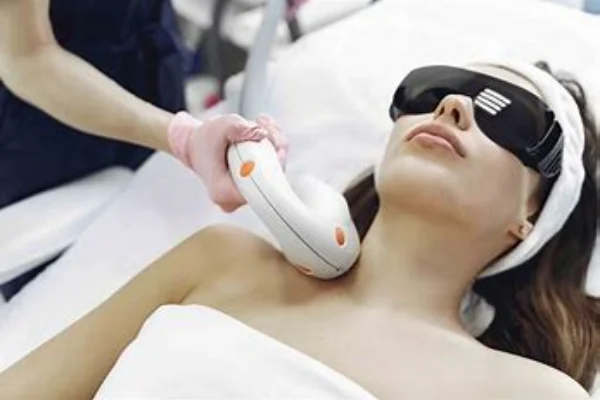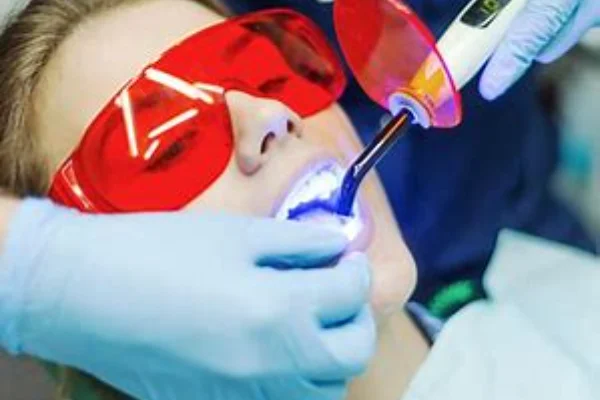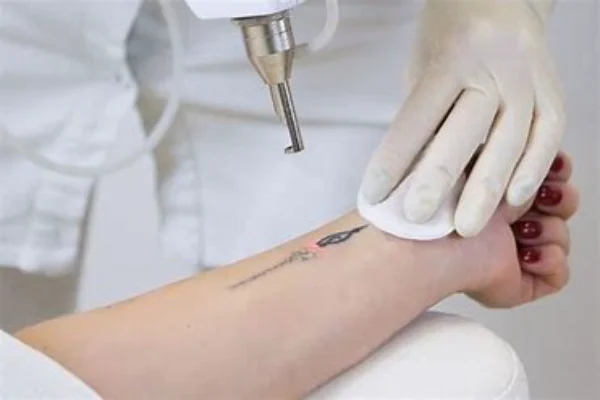Introduction
In the contemporary world of medical and aesthetic treatments, Cr, Tm, Ho:YAG lasers have carved out a unique space for themselves. Their incredible versatility in terms of wavelength, combined with specific tissue interactions, makes them an indispensable tool in both therapeutic and cosmetic procedures.
Basics of Cr, Tm, Ho:YAG Lasers
Chromium, thulium, and holmium-doped yttrium aluminum garnet (YAG) lasers, abbreviated as Cr, Tm, Ho:YAG, are solid-state lasers. They play a pivotal role in producing specific wavelengths that are highly effective for various medical applications.

Exploring the Spectrum: Wavelength Versatility and Tissue Interactions in Cr, Tm, Ho:YAG Lasers
The realm of medical technology has been vastly improved by innovations like the Cr, Tm, Ho:YAG lasers, which stand out due to their remarkable wavelength versatility and precise tissue interactions. At the heart of this breakthrough is the laser’s ability to produce a variety of wavelengths. By doping the laser with different elements such as Chromium, Thulium, or Holmium, it can emit light across various segments of the infrared spectrum. This capability has transformative implications for medical and aesthetic applications.
Why is this ability to emit different wavelengths so crucial? Simply put, it determines how the laser will interact with various tissues. It’s a well-established fact that different tissues have unique absorption profiles. To be effective, a laser must emit light at a wavelength that can be efficiently absorbed by the targeted tissue. A laser’s wavelength is like a key, and the tissue’s absorption properties are like a lock. Only when the key fits the lock does the laser work most effectively. In essence, these lasers offer the ability to tailor the treatment to the specific needs of the tissue, ensuring maximum efficacy and minimal side effects.
Consider, for instance, the example of water. A significant component of many body tissues, water has a high absorption rate for specific wavelengths emitted by Ho:YAG lasers. This makes the laser especially effective for treatments involving these tissues. When the laser light is absorbed by water, the energy is converted into heat, leading to various therapeutic effects.
Now, this interplay between lasers and tissues isn’t just about absorption. The subsequent interactions can be broadly categorized into thermal and non-thermal effects. The thermal effects, as the name suggests, involve heat. In many medical and aesthetic procedures, the heat generated by laser absorption is harnessed to coagulate or even vaporize tissues. This is particularly useful in processes like skin resurfacing or removal of unwanted growths.
On the other hand, there are non-thermal effects where the energy from the laser is used to trigger specific reactions without a significant rise in temperature. Such interactions ensure that while the targeted tissue is affected, there’s minimal or no damage to the surrounding structures.
To sum it up, the Cr, Tm, Ho:YAG lasers, with their spectrum of wavelengths and tailored tissue interactions, represent a paradigm shift in the world of medical lasers. They bridge the gap between technology and biology, ensuring treatments are not only effective but also safe. As we continue to uncover the full range of their capabilities and fine-tune their applications, one thing is certain: these lasers have set the gold standard in medical and aesthetic treatments, making them an indispensable tool for practitioners worldwide.

Skin Resurfacing
Skin resurfacing is a groundbreaking procedure that has revolutionized the realm of cosmetic dermatology, and the introduction of Cr, Tm, Ho:YAG lasers has been pivotal in this revolution. The fundamental mechanism behind this treatment is relatively straightforward yet profoundly transformative. When deployed for skin resurfacing, these lasers meticulously strip away the outermost skin layer, often laden with imperfections, damage, and signs of aging. But this is more than just a superficial erasure. By removing this top layer, the process inherently stimulates the body’s natural healing mechanism, compelling it to produce fresh skin cells. The outcome? A visage that radiates youth, vitality, and health.
One of the unparalleled benefits of using Cr, Tm, Ho:YAG lasers for skin resurfacing is the broad spectrum of skin issues it can address. It’s not just about attaining a wrinkle-free complexion; the magic of these lasers extends far beyond. Scarring, a common skin concern that plagues many, especially those who have battled severe acne, can be significantly reduced, if not completely eradicated. The laser’s precision ensures that scar tissues are targeted and diminished without causing unwarranted damage to adjacent healthy skin.
Furthermore, the harmful effects of prolonged sun exposure, such as hyperpigmentation, age spots, and a leathery skin texture, can also be effectively treated. The lasers work diligently to break down the pigment clusters causing discoloration, leading to a more even-toned complexion. This is especially beneficial for those who, despite diligent sunscreen use, have seen the adverse effects of UV damage on their skin.
Another noteworthy advantage is the treatment of uneven skin tone. Whether caused by hormonal fluctuations, environmental factors, or other reasons, uneven skin tone can be a source of diminished confidence for many. Cr, Tm, Ho:YAG lasers cater to this concern by promoting an even skin texture and tone, giving one a more luminous and uniform complexion.
In essence, the magic of Cr, Tm, Ho:YAG lasers in skin resurfacing is not merely skin-deep. It’s a comprehensive solution that addresses a myriad of skin concerns, rejuvenating the skin not just aesthetically but also at a cellular level. The promise is not just of beauty but of renewed skin health and vitality.

Tattoo Removal with YAG Lasers
Tattoo removal has undergone significant evolution with the advent of advanced technologies, and YAG lasers stand at the forefront of this transformation. Tattoos, which were once considered permanent, can now be removed or significantly faded with a high degree of precision and safety. The process leverages the unique properties of the YAG laser to hone in on the ink particles embedded in the skin. Upon targeting, these lasers emit pulses of intense light that are absorbed by the ink particles. This absorption of energy leads to the breakdown of the ink into minute fragments.
But how does a tattoo, once broken down, actually fade away? Here’s where the human body’s incredible natural mechanisms come into play. Once the ink is fragmented by the laser, the body’s immune system springs into action. It recognizes these smaller particles as foreign entities and works diligently to eliminate them through natural processes. This removal by the immune system results in the gradual fading of the tattoo over a series of weeks to months.
However, it’s crucial to manage expectations when opting for laser tattoo removal. While YAG lasers offer remarkable efficacy, the results can vary based on several factors intrinsic to the tattoo itself. For instance, larger tattoos or those with deeply saturated colors might necessitate multiple sessions for optimal fading. Similarly, the type of ink used can influence the outcome. Some inks are more resistant to laser treatment than others, and thus might be more challenging to remove entirely. Despite these variances, with patience and consistent treatments, YAG lasers offer a promising solution for those seeking to part ways with their inked past, providing a clearer canvas and a fresh start.

Dental Applications
The domain of dentistry has always been a hotbed of innovation, keenly adopting cutting-edge technologies to improve patient outcomes. The introduction of Cr, Tm, Ho:YAG lasers in dental procedures has been nothing short of a game-changer, bringing transformative benefits both for practitioners and those in the chair.
In periodontics, a branch of dentistry focused on the structures supporting the teeth, these lasers have proven invaluable. Traditionally, treating gum diseases often involved invasive procedures which, while effective, sometimes affected the surrounding healthy tissues. With the precision of Cr, Tm, Ho:YAG lasers, dental professionals can now target only the diseased portions of the gums. This means less discomfort during procedures, quicker recovery times, and minimal risks of post-operative complications. By being able to delineate between healthy and affected areas so distinctly, these lasers ensure that patients receive the benefits of treatment without unnecessary damage to their gums.
Another exhilarating development brought about by these lasers is in the realm of cosmetic dentistry, particularly tooth whitening. A bright, white smile is often equated with health and confidence. However, traditional whitening methods, while effective, often require prolonged sessions and repeated visits. Enter Cr, Tm, Ho:YAG lasers, which have revamped this process. By interacting with whitening agents applied to the teeth, these lasers accelerate the bleaching process, often yielding results that are several shades brighter in just a single session.
Patients walk out with immediate, visible results, making the lasers a favorite both among dental practitioners and those eager to brighten their smiles with minimal fuss. In essence, in the intricate world of dentistry, Cr, Tm, Ho:YAG lasers have solidified their place as indispensable tools, promising enhanced outcomes with unparalleled efficiency.

Future Directions in Laser Applications
With technological advancements, it’s anticipated that Cr, Tm, Ho:YAG lasers will find newer applications, particularly in areas of deep tissue treatments and possibly even in targeted drug delivery.
Conclusion
Cr, Tm, Ho:YAG lasers have undeniably changed the landscape of medical and aesthetic treatments. Their unparalleled versatility in wavelength and specific tissue interactions ensures they remain at the forefront of non-invasive procedures.
FAQs
- What makes Cr, Tm, Ho:YAG lasers different from other lasers?
- Their unique ability to produce varying wavelengths and specific tissue interactions sets them apart.
- Are there any side effects to using these lasers for treatments?
- While side effects are minimal, some patients might experience temporary redness or swelling. Always consult with a trained professional.
- How many sessions are typically needed for tattoo removal?
- It varies depending on the tattoo, but multiple sessions are generally required for optimal results.
- Is laser tooth whitening permanent?
- While it offers long-lasting results, periodic touch-ups might be required to maintain the brightness.
- Can these lasers treat all skin types?
- Cr, Tm, Ho:YAG lasers are versatile, but individual suitability should be assessed by a dermatologist or aesthetician.

Frank
Frank graduated from the University of Shanghai for Science and Technology, majoring in optics. As a technical engineer at Crylink Company, he deeply understands crystal materials and laser components.
Related Video(s) with this Article
Related Product(s) with this Article
Related Application(s) with this Article
